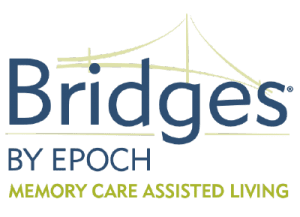“The terms ‘dementia’ and ‘Alzheimer’s’ are often used interchangeably, which is a bit like calling all automobiles Fords,” says Addie Ricci, Executive Director at Bridges® by EPOCH at Norwalk, located in Norwalk, CT.
“Alzheimer’s disease is a form of dementia, but not all dementias are Alzheimer’s disease,” she says. “In fact, there are more than 400 different types of dementia that we know about, and that number continues to climb as we continue to research these types of disease.”
The most common form of dementia is Alzheimer’s disease, which makes up about 60-80% of dementia cases. There are four other “common” types of dementia: vascular, Lewy body/Parkinson’s, frontotemporal and mixed.
What Is Dementia?
Dementia is an umbrella term for a group of symptoms that are associated with cognitive decline. It’s not a specific disease; rather, it’s used to describe an impairment of two or more brain functions. For example, if a person has memory loss but no other associated cognitive issues, they do not have dementia. If the person has memory loss and impaired thinking abilities, this would be classified as dementia (even if those are the only two issues that manifest). Some forms of dementia are curable and even reversible; however, the most common types of dementia can’t be cured or reversed.
What Is Alzheimer’s Disease?
Alzheimer’s disease is a specific form of dementia that affects the entire body. It is a progressive brain disease that worsens over the course of several to many years, eventually leading to the loss of all body function. Today, more than 5.8 million individuals live with Alzheimer’s disease, and it’s the sixth leading cause of death in the United States.
Memory loss is usually the first sign that someone has developed the disease. Other early signs of Alzheimer’s include forgetting words, difficulty remembering newly learned information and mild confusion. Oftentimes, these changes are slight enough that family members will brush off the symptoms as “senior moments” or something that naturally occurs as a person ages. But while memory impairment can be a sign of normal aging, Alzheimer’s disease goes beyond what is considered normal.
Depending on a variety of factors, including genetics, overall health, diet, physical activity and when Alzheimer’s is diagnosed, the disease can progress quickly or slowly. Although there is currently no cure for Alzheimer’s disease, there are medications, treatments and lifestyle changes that can be used to help slow the progression of the disease and help the individual live a healthy, happy life.
What Are the Other Common Forms of Dementia?
Vascular dementia is the second-most common form of dementia, accounting for five to 10 percent of cases. It occurs when blood flow is severely reduced to the brain, such as during a stroke. The inadequate blood flow causes the brain cells in that particular area to die off. Unlike Alzheimer’s disease, vascular dementia can seemingly occur out of nowhere, and symptoms can range depending on what part of the brain has been affected.
Memory loss can be a symptom, but this type of dementia is more characterized by issues in thinking and perception. This can result in confusion, difficulty speaking, difficulty understanding speech, disorientation and other stroke-like symptoms. Vascular dementia can be a progressive disease, depending on whether or not strokes continue. Generally, changes happen suddenly instead of slowly over time. Individuals with vascular dementia should follow a heart-healthy routine in order to reduce the incidence of further strokes.
Lewy body/Parkinson’s dementia have been classified as two different forms of dementia, but it’s thought that they are actually two different expressions of the same cause. Lewy body dementia occurs when Lewy bodies (a certain type of protein) occur in the brain, which causes confusion, hallucinations, disorientation and disruption of the nervous system. Parkinson’s dementia also develops due to Lewy bodies, but is generally diagnosed after a diagnosis of Parkinson’s disease.
Lewy body dementia is considered a “clinical” disease because the only way to officially diagnose it is through a postmortem autopsy. Because the symptoms are so similar to Alzheimer’s disease, it is often diagnosed and treated as such. Further research is needed to determine the exact cause of Lewy body dementia and treatments specifically designed for this type of disease.
Frontotemporal dementia is caused by progressive nerve cell loss in the brain’s frontal lobes (the areas behind your forehead) or its temporal lobes (the regions behind your ears). This type of dementia often begins at a younger age than Alzheimer’s disease, typically between the ages of 40 and 65 (unlike other forms of dementia, which are generally diagnosed after age 65). Behavioral changes are usually the first sign of this type of dementia, while memory loss generally occurs in the late stages of this disease. It does get worse over time, but the speed and severity at which it occurs varies from person to person.
Mixed dementia occurs when someone is diagnosed with two or more forms of dementia. The most common form of dementia is a mixture of Alzheimer’s disease and vascular dementia. Researchers believe that mixed dementia is more common than first expected. More research is needed in order to determine the causes of this type of dementia, as well as determine what forms of treatment will be most effective in different cases.
Caring for All Types of Dementia
“No matter what form of dementia your loved one is diagnosed with, you want the same thing: a happy, healthy and safe life for him or her,” says Addie. “We are dedicated to staying on top of the latest research and treatments for all forms of dementia so we can continue to provide the highest-quality care for our residents and their families. All members of our team receive continuous training in order to stay on top of best practices and approaches. As new developments in dementia care and research unfold, we will adapt them into daily life at our memory care assisted living community. Until a cure for dementia is found, Bridges by EPOCH at Norwalk will make sure that those living with the disease have an enriching, fulfilling and enjoyable lifestyle each and every day.”
Expert, Life-Enriching Memory Care
Bridges® by EPOCH at Norwalk provides memory care assisted living that is comfortable, positive, safe and engaging. Exclusively dedicated to caring for those with Alzheimer’s disease and other forms of dementia, our community promotes a wellness-focused lifestyle that emphasizes dignity and individual preferences. Our memory care professionals receive specialized, ongoing training designed to help residents maximize their independence in a secure, calm environment – making a truly positive impact on the lives of our residents.
Inspiring Programs for All Stages
Bridges® by EPOCH at Norwalk’s services are designed to recognize and adapt to the unique challenges and individuality of each resident, while ensuring comfort and safety. We believe in a full-service approach to care and provide personalized attention and programming for residents in every stage of memory loss.
Purposeful Community Design
Within a beautiful residential design, Bridges® by EPOCH at Norwalk provides everything residents with Alzheimer’s disease and other forms of dementia need to enjoy comfort, familiarity and security. Soft colors, directional cues, aromatherapy and interactive life stations create a soothing and secure environment where residents feel at home.
Contact us today to learn more.


